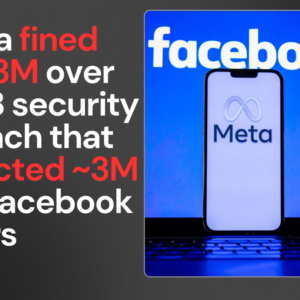AI-Powered Cyber Attacks: The New Frontier in Digital Threats
Have you ever wondered what happens when the most sophisticated AI tools fall into the wrong hands? As of early 2025, we’re witnessing an alarming trend: cybercriminals are leveraging generative AI to supercharge their attacks at an unprecedented scale. What once required teams of skilled hackers can now be automated, personalized, and executed with frightening efficiency.
A recent cybersecurity report revealed that AI-powered cyber attacks increased by 73% in the last 12 months alone, with the average cost of these breaches reaching $5.2 million—significantly higher than traditional attacks. This isn’t tomorrow’s problem; it’s today’s reality that organizations across every sector must confront.
How Hackers Are Weaponizing Generative AI
Generative AI has democratized cyber threats in ways security experts feared but hoped wouldn’t materialize. Large language models (LLMs) and other AI systems are being repurposed as powerful weapons in the hacker arsenal, transforming how attacks are conceived and executed.
1. Hyper-Personalized Phishing at Scale
Gone are the days of easily spotted phishing attempts with broken English. Today’s AI-powered phishing campaigns analyze social media profiles, public records, and corporate communications to craft messages that mimic trusted colleagues with uncanny precision. These attacks can now be personalized for thousands of targets simultaneously, including contextual references that make them nearly indistinguishable from legitimate communications.
One finance executive at a Fortune 500 company reported receiving an email that mentioned specific details from a private meeting held just hours before—the attacker had used AI to analyze the company’s public calendar, recent press releases, and the executive’s speaking style to create the perfect lure.
2. Code Generation for Zero-Day Exploits
Hackers are using code-generating AI to discover and exploit vulnerabilities faster than ever. What previously might have taken weeks of manual code inspection can now be automated, with AI systems scanning millions of lines of code to identify potential entry points. More concerning still, these systems can then generate the exploit code needed to take advantage of these vulnerabilities.
In February 2025, a major cloud provider experienced a sophisticated breach when attackers used an AI system to identify a previously unknown vulnerability in their authentication system and automatically generate exploit code—all within hours of the code being deployed.

3. Social Engineering Amplified by Voice Cloning
Voice cloning technology, once a novelty, has become a serious threat vector. Hackers can create realistic voice impersonations with just a few minutes of sample audio, often pulled from public speeches, earnings calls, or social media posts. These synthetic voices are then used in vishing (voice phishing) attacks, often calling employees to request urgent security bypasses or financial transfers.
A manufacturing firm lost $1.7 million when an AI-cloned voice of their CEO called the CFO, convincingly explaining an “urgent confidential acquisition” requiring immediate wire transfer. The voice even included the CEO’s characteristic speech patterns and background noise matching his known location at the time.
4. Deepfake-Enhanced Business Email Compromise
Business email compromise (BEC) attacks have evolved with AI-generated deepfake video capabilities. Attackers now schedule fake “emergency” video calls where deepfake versions of executives instruct employees to take actions that benefit the criminals. These videos maintain eye contact, natural facial expressions, and reference inside information, making them deeply convincing.
The banking sector has been particularly targeted, with multiple institutions reporting attempted fraud where deepfake videos of board members were used in attempts to authorize unusual transactions or gain access to secure systems.
Defending Against the AI Threat Evolution
While the threat landscape is evolving rapidly, defensive capabilities are also advancing. Organizations are finding that the same AI technologies powering attacks can be harnessed to create more resilient security postures.
1. Implementing AI-Powered Authentication Systems
Multi-factor authentication is evolving beyond one-time codes. Advanced systems now incorporate behavioral biometrics that analyze patterns in how users type, navigate applications, and interact with devices. These systems build continuously updated profiles that can detect anomalies even when credentials are compromised.
Organizations implementing AI-powered continuous authentication report up to 91% reduction in successful account takeovers, with minimal impact on legitimate user experience. These systems work invisibly in the background, only challenging users when behavior significantly deviates from established patterns.
2. Deploying Defensive AI for Threat Detection
Security operations centers are implementing defensive AI systems that continuously monitor network traffic, application usage, and data movement for signs of compromise. Unlike traditional rule-based systems, these AI defenders can identify subtle patterns indicating potential threats before they materialize into full attacks.
A healthcare provider successfully prevented a ransomware attack when their AI security system identified unusual encryption activity beginning across several seemingly unrelated systems. The AI flagged the behavior as anomalous despite it occurring across different network segments that traditional security monitoring would have viewed in isolation.
3. Education and Human Vigilance
The human element remains crucial in defense strategies. Organizations are investing in advanced training that specifically addresses AI-generated threats. Employees are being taught to verify requests through separate channels, recognize the limitations of even modern verification methods, and maintain a healthy skepticism toward urgent unusual requests.
Regular simulations using actual AI-generated attack content give employees practice identifying even sophisticated attacks, with these programs showing up to 67% improvement in staff ability to recognize AI-enabled social engineering attempts.
4. Developing AI Detection Algorithms
A promising defensive frontier involves AI systems specifically designed to detect content generated by other AI systems. These “AI detectors” analyze subtle patterns and artifacts that reveal synthetic content, providing an additional layer of verification when authentication is critical.
Financial institutions have pioneered systems that automatically scan incoming attachments, emails, and even audio for signs of AI generation, flagging potentially synthetic content for additional verification before any action is taken.

The Future Cybersecurity Landscape
As we look toward the latter half of the decade, we’re entering an era of AI-versus-AI in the cybersecurity domain. Attack and defense technologies will continue to evolve in a technological arms race, with each advance on one side spurring innovation on the other.
Organizations that survive and thrive will be those that recognize this new reality and adapt accordingly. Static security postures will increasingly fail against dynamic AI-powered threats. Instead, resilient, adaptable security systems that leverage AI defensively while addressing its offensive capabilities will define the successful enterprise security strategy.
The businesses already investing in these capabilities report not just improved security metrics, but competitive advantages as customers and partners increasingly factor security posture into their decision-making processes.
Taking Action Today
Don’t wait for an AI-powered attack to expose vulnerabilities in your organization. Begin by assessing your current security posture specifically against AI-enhanced threats. Evaluate authentication systems, train employees on the latest social engineering techniques, and consider implementing AI defensive tools appropriate to your threat profile.
The organizations that have successfully navigated these new threats aren’t necessarily those with the largest security budgets, but rather those that approached the challenge strategically, prioritizing their most critical assets and implementing appropriately scaled defenses.
In this new frontier of AI-powered cyber attacks, awareness and adaptation aren’t just best practices—they’re survival skills in an increasingly sophisticated threat landscape.












